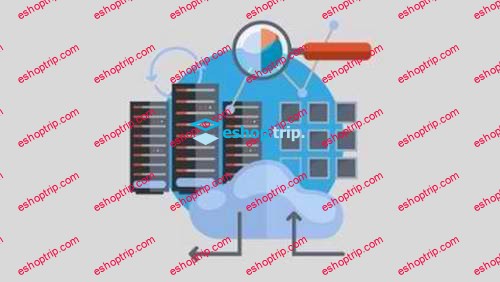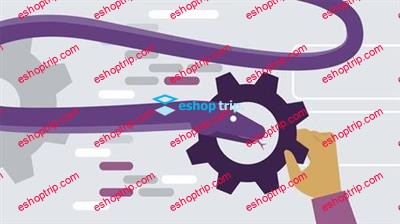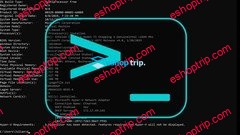Published 2/2023
MP4 | Video: h264, 1280×720 | Audio: AAC, 44.1 KHz
Language: English | Size: 1.65 GB | Duration: 6h 4m
Proven design patterns. best practices, tips on saving costs and more
What you’ll learn
Use DynamoDB Data Modeling patterns
Apply Best DynamoDB practices
Leverage the right DynamoDb features in their applications
Analyze use cases for DynamoDB
Requirements
NO programming experience
Some experience with AWS Cloud
Knowledge of any database
A decent machine with internet connectivity
An AWS account for some of the exercises
Description
Note:This course does NOT use AWS console for showing you basic DynamoDB operationsThis course does NOT focus on just coding This course primarily focusses on Data Modeling practices and patterns for Amazon DynamoDB. You will also learn DynamoDB best practices, tips and techniques for building modern and cost effective applications/microservices. At a high level, course is divided into 2 parts:Part-1 Objective: Build a solid understanding of DynamoDBHow DynamoDB works under the covers?Hands-on exercises to try out the DynamoDB API(s) using CLI and Python codeFeature/capability comparison with relational databasePart-2 Objective: Learn to apply DynamoDB design patternsLearn DynamoDB data modeling processHow to apply patterns to address business requirementsAnalyze the access patterns and identify the right pattern to useHands-on exercises to build a data model for a banking use case (refer: ACME case study)Tools in useNoSQL workbenchLocal DynamoDB for model development & testingAWS cloud account for testing (minimal use)An integrated development environment (like Visual Studio Code)Python – if you would like to run the code samples on your machineGit clientIs this course for me?Yes – if you are an Architect responsible for designing apps on DynamoDBYes – if you are a Developer and aspiring to become an architectYes – if you are a DBA and looking to expand your skills to NoSQL databasesYes – if you are a Technologist who is curious on how DynamoDB works under the coversNo – if you are just looking for basic how to tutorials on DynamoDBNo – if you are looking for coding DynamoDB appsCourse approachCourse does not assume that you already know DynamoDB. For that reasons, I am first covering the basics of DynamoDB. But unlike other courses, I will not just show you how-to use DynamoDB rather I will show you how DynamoDB works under the covers !! I strongly believe that to effectively use a database, an architect MUST understand how database technology works under the covers. Data modeling is an iterative process. I am sharing a prescriptive guidance on the process and then showing step-by-step how to apply the process. As a case study I am using an example of ACME bank (a fictitious retail bank). Throughout the course we will be applying the process to ACME bank use cases to evolve a full blown DynamoDB data model. Case study : ACME BankA fictitious bank that has embarked on a journey to modernize its retail banking systems. You are the Lead Architect for the retail banking modernization initiative. It is your responsibility:To work with business owners to understand the requirementsTo model the data for DynamoDBProve/Disprove that DynamoDB will meet the application needsEducate stakeholders on DynamoDB capabilitiesHelp ACME Bank CTO to make a decision on whether to use DynamoDB or not
Overview
Section 1: Introduction
Lecture 1 Introduction
Lecture 2 Course outline & How to get the most out of this course
Section 2: Tools, Local Development Environment
Lecture 3 Setup Local DynamoDB and NoSQL Workbench
Lecture 4 Exercise: NoSQL Workbench walkthrough
Lecture 5 Exercise: Use CLI, Workbench with Local Table
Lecture 6 Setup IDE and Git Repository
Section 3: Amazon DynamoDB Fundamentals
Lecture 7 DynamoDB: A Logical View
Lecture 8 Table capacity fundamentals
Lecture 9 Table capacity modes
Lecture 10 Exercise: Try out the capacity modes
Lecture 11 Item Attributes & Data Types
Lecture 12 Exercise: Create a test model
Lecture 13 DynamoDB Operations
Lecture 14 Control Plane Operations
Section 4: CRUD: Create API
Lecture 15 Writes : Under the hood
Lecture 16 API: PutItem, BatchWriteItem, Condition Expressions (7:14)
Lecture 17 Exercise: Add Items to Student Table
Section 5: CRUD: Retrieve API
Lecture 18 Reads : Under the hood
Lecture 19 API: GetItem, BatchGetItem, Scan
Lecture 20 Queries : Under the hood
Lecture 21 Queries & Key Condition Expression
Section 6: CRUD: Update & Delete API
Lecture 22 Update & Delete : Under the hood
Lecture 23 API: UpdateItem
Lecture 24 API: DeleteItem
Section 7: CRUD : PartiQL Queries
Lecture 25 CRUD : PartiQL Statements & API
Section 8: DynamoDB Secondary Indexes
Lecture 26 Indexes : Under the hood
Lecture 27 Local Secondary Index (LSI)
Lecture 28 Hands-On: Local Secondary Index
Lecture 29 Global Secondary Index (GSI)
Lecture 30 Hands-On: Global Secondary Index
Section 9: Single Table Design
Lecture 31 Single Table Vs. Multiple Table Design
Lecture 32 Single table modeling process
Section 10: Case Study : ACME Bank
Lecture 33 ACME Bank Transformation Journey
Lecture 34 ERD and Access patterns
Section 11: Modeling : Entities
Lecture 35 How to model an entity?
Lecture 36 Hands-On: Design the Customer Entity
Section 12: Modeling : Primary Keys
Lecture 37 Patterns for primary key
Lecture 38 Hands-On: Apply best practices for key
Section 13: Modeling : One to Many Relationships
Lecture 39 Patterns for one-to-many relationships
Lecture 40 Analyze : Customer-Account Relationship
Lecture 41 Hands-On: Embedding with Secondary Index
Section 14: Modeling : Secondary Indexes
Lecture 42 Hands-On: Add index for accessing customer on account
Lecture 43 Hands-On: Model the transaction entity
Lecture 44 Analysis : Taking advantage of sparse indexes
Lecture 45 Hands-On: Add a sparse index for Customer-Txns
Lecture 46 Analysis : Taking advantage of Index Overloading
Lecture 47 Hands-On: Implement Overloaded GSI for Customer & Transaction
Section 15: Modeling : Many-to-Many Relationship
Lecture 48 Adjacency List Pattern
Lecture 49 Analysis : Customer-Offer Relationship
Lecture 50 Hands-On: Apply adjacency pattern to customer-offer relationship
Section 16: Modeling : Preventing Hot Partitions
Lecture 51 Hot Partitions & Sharding patterns
Lecture 52 Hands-On : Address hot partition issue
Section 17: Modeling : Efficient Scans
Lecture 53 Hands-On: Experimenting with parallel scan
Lecture 54 Analysis : Scan Vs. GSI for for txns in date range
Section 18: ACID Transactions
Lecture 55 What are ACID Transactions?
Lecture 56 API: TransactWriteItems
Lecture 57 Hands-On: TransactWriteItems API
Lecture 58 TransactWriteItems Idempotence
Lecture 59 API : TransactGetItems
Section 19: Modeling : Transactions
Lecture 60 Hands-On : Running counters
Lecture 61 Hands-On : Credit Transactions
Lecture 62 Hands-On: Debit Transaction
Section 20: DynamoDB Streams
Lecture 63 DynamoDB Streams
Lecture 64 Shards & Stream Reader Application
Lecture 65 Hands-On: Experiment with Streams API
Lecture 66 Hands-On: Tryout API with Python
Section 21: Modeling : DynamoDB Streams
Lecture 67 Modeling : Setup daily report
Solution Architects,Cloud application Developers,Cloud Engineers,Database Administrator interested in learning NoSQL databases
HOMEPAGE
https://anonymz.com/?https://www.udemy.com/course/dynamodb-data-modeling/











Reviews
There are no reviews yet.